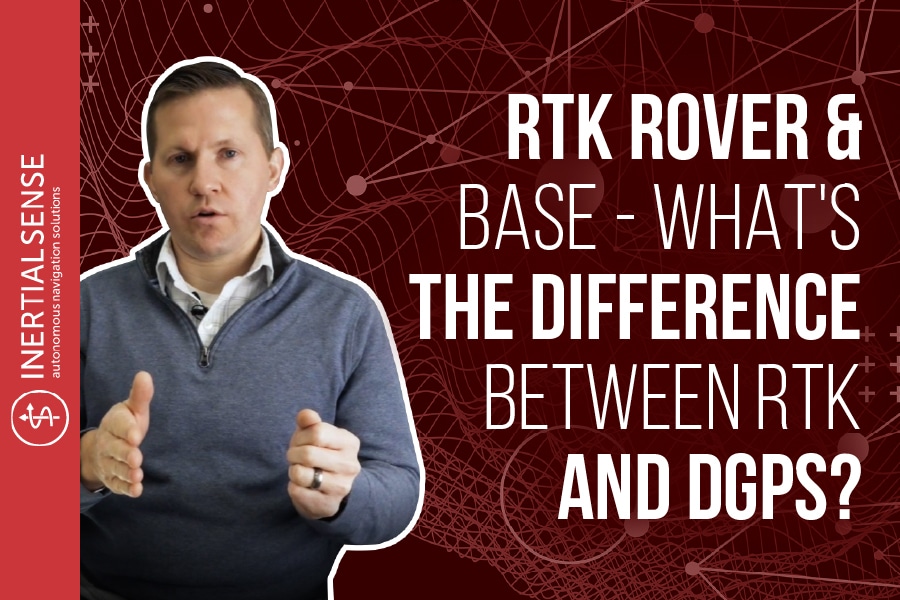
RTK Rover & Base – What’s The Difference Between RTK and DGPS?
You ever wonder what the difference between RTK base stations and differential GPS (DGPS) is, and how the two can operate together? Watch the video below as Walt breaks down how the two work together to give accurate information and data.
How RTK GPS works is you have two GPS systems, a rover and a base. The base is in a known location that is surveyed. It knows its position with precision and between the two of those, you can correct or remove errors that either one of them would observe themselves.
The rover receives corrections information that the base reads, plus the surveyed location, and it is then able to take the difference between that and what the rover itself measures and essentially remove atmospheric and other sources of error. The result of this is it changes the accuracy of the solution from meter-level to centimeter-level accuracy.
The RTK system is composed of a rover and a base station. At Inertial Sense, the base system used for testing is composed of a pelican box and a tripod. But in essence, Inertial Sense has the same system for both sides, in the GPS receiver in the base and in the rover.
The base is surveyed for a known location, and then the base transmits its information to the rover, both the raw GPS data that it receives and the surveyed position. The rover takes that information, adds it to its own received raw GPS information, and is then able to remove the error that is seen caused due to atmospheric distortion and errors in the GPS signals themselves.
So, the difference between RTK and DGPS is that DGPS is the traditional differential GPS. RTK is a specific type of DGPS. but it uses a newer technology than the traditional DGPS.
RTK stands for real-time kinematic and commonly uses the RTCM protocol. The traditional DGPS uses an older antiquated protocol while RTK uses a newer algorithm, and the protocol is based on RTCM3.
Contact Inertial Sense today and let us help you find the right GPS for you!
Learn More:
What Is RTK and Why Do I Need It?
The Difference Between IMU, AHRS, and INS
Video Transcript:
So what is RTK GPS, how does that work?
Well RTK GPS, RTK stands for real-time kinematic. How it works is you have two GPS systems. You have the rover, you have the base. The base is in a known location that’s surveyed. It knows its position with precision and between the two of those, you’re able to correct or remove errors that either one of them would observe themselves.
So the rover receives corrections information, all the information that the base reads, plus its surveyed location, and it’s able to take the difference between that and what the rover itself measures and essentially remove atmospheric and other sources of error. And as a result, it changes the accuracy of the solution from meter-level to centimeter-level accuracy.
So an RTK system is composed of a rover and a base. Our base system that we use for testing is composed of a pelican box and a tripod. But in essence, we have the same system on both sides. The same GPS receiver in the base and in the rover. What happens is the base is surveyed for a known location, and then the base transmits its information to the rover, both the raw GPS data that it receives and the surveyed position. The rover takes that information, adds it to its own received raw GPS information, and is able to remove the error that’s seen caused due to atmospheric distortion and errors in the GPS signals themselves.
So what is the difference between RTK and DGPS? DGPS is the traditional differential GPS. RTK is a specific type of DGPS. but it uses a newer technology than the traditional DGPS. RTK stands for real-time kinematic and commonly uses the RTCM protocol. The traditional DGPS uses an older antiquated protocol. RTK uses a newer algorithm and the protocol is based on RTCM3.

